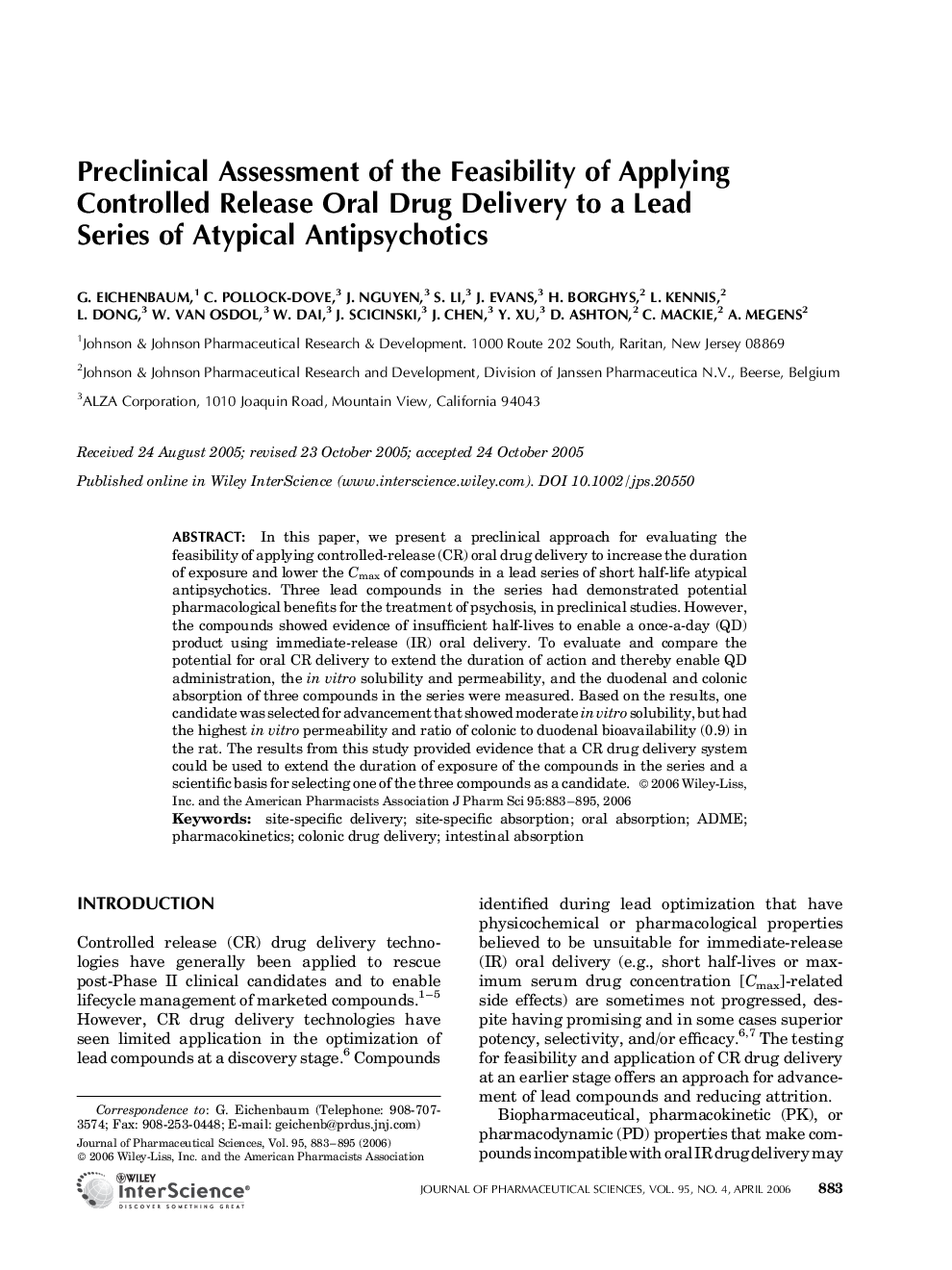| Article ID | Journal | Published Year | Pages | File Type |
|---|---|---|---|---|
| 2488037 | Journal of Pharmaceutical Sciences | 2006 | 13 Pages |
Abstract
In this paper, we present a preclinical approach for evaluating the feasibility of applying controlled-release (CR) oral drug delivery to increase the duration of exposure and lower the Cmax of compounds in a lead series of short half-life atypical antipsychotics. Three lead compounds in the series had demonstrated potential pharmacological benefits for the treatment of psychosis, in preclinical studies. However, the compounds showed evidence of insufficient half-lives to enable a once-a-day (QD) product using immediate-release (IR) oral delivery. To evaluate and compare the potential for oral CR delivery to extend the duration of action and thereby enable QD administration, the in vitro solubility and permeability, and the duodenal and colonic absorption of three compounds in the series were measured. Based on the results, one candidate was selected for advancement that showed moderate in vitro solubility, but had the highest in vitro permeability and ratio of colonic to duodenal bioavailability (0.9) in the rat. The results from this study provided evidence that a CR drug delivery system could be used to extend the duration of exposure of the compounds in the series and a scientific basis for selecting one of the three compounds as a candidate.
Keywords
Related Topics
Health Sciences
Pharmacology, Toxicology and Pharmaceutical Science
Drug Discovery
Authors
G. Eichenbaum, C. Pollock-Dove, J. Nguyen, S. Li, J. Evans, H. Borghys, L. Kennis, L. Dong, W. van Osdol, W. Dai, J. Scicinski, J. Chen, Y. Xu, D. Ashton, C. Mackie, A. Megens,
